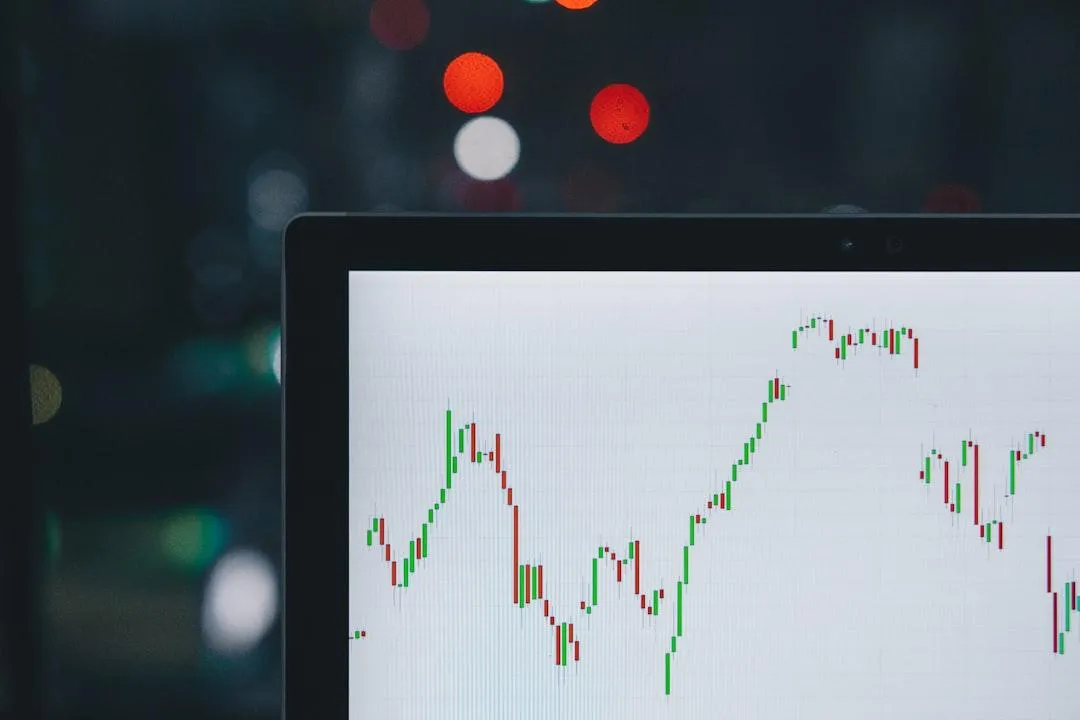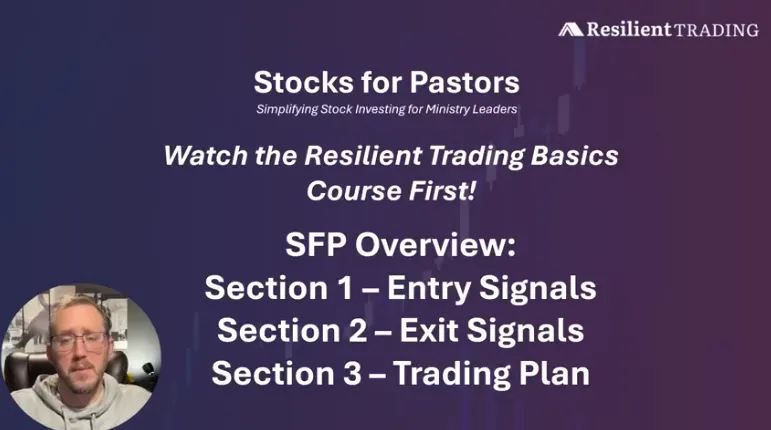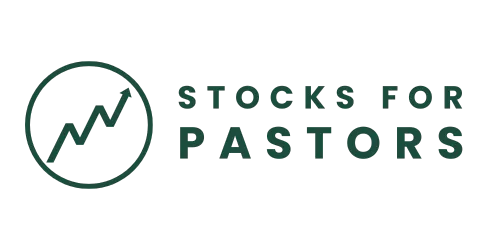Learn two beginner-friendly strategies, follow weekly alerts, and join a community that helps you see $100–$300/month potential without overwhelm.
Build the Skills to Trade Confidently and Create Steady Income

Let’s Talk About the Quiet Financial Pressure Most Pastors Carry
You’re not lazy. You’re not irresponsible.
You’ve just been so focused on helping others that your own financial future got pushed to the side. Maybe…
You’ve contributed to a retirement account here and there, but it’s nowhere near enough.
You’ve looked at the stock market before and thought, “I don’t have time to figure this out.”
You’ve wondered if you’ll have to keep working long after you want to stop, just to make ends meet.
You’ve even considered a second job or side hustle... but the thought of it wears you out.
You're not alone.
Thousands of pastors are in the same boat and they're quietly anxious about what the future holds.
But here's the truth:
You don’t need more time or more stress. You just need a smarter way to grow what you already have.
It’s a simple, proven investing system designed specifically for pastors who want to build wealth for the long haul; without financial stress, guesswork, or complicated strategies.

You don’t need a finance degree. You don’t need thousands of dollars.
All you need is a desire to take control of your future, and a guide who understands your world.
What You’ll Gain
Clarity on exactly when to enter and exit trades
Two proven strategies that fit into your schedule
Monthly watchlist of high-probability stock setups
Weekly trade alerts so you can follow along with confidence
Supportive community to keep you motivated and learning
Direct answers when you have questions
Why New Traders Succeed Faster in Foundations
Built by a pastor who understands the financial challenges ministry leaders face
Strategies tested and refined with years of real-world results
A step-by-step learning path that meets you where you are
A community that values wisdom, stewardship, and intentional growth

While nothing is guaranteed in trading and there is always a risk of losing, many members report seeing $100–$300/month potential within their first few months of joining. The real win is gaining the skills and confidence to make disciplined, repeatable trades.
PRICING
Choose Your Plan
Foundations
$97/mo
Beginner-friendly video course that walks you through every step
Monthly seasonal watchlist of high-probability stocks
Real-time trade alerts for SLM and MIS strategies
Access to member community
Downloadable checklists, templates, and guides
Up to 3 questions per month, responses within 48 hours
Seasonal Leverage Method course
Monthly Income Strategy course
Cash Flow Collective Course
Double Canopy Strategy Course
Monthly live group coaching calls
2 free months
1:1 onboarding video chat and initial coaching session

No contracts - cancel anytime
Income Accelerator
$197/mo
Beginner-friendly video course that walks you through every step
Monthly seasonal watchlist of high-probability stocks
Real-time trade alerts for all four strategies
Access to member community
Downloadable checklists, templates, and guides
Unlimited questions, priority same-day response
Seasonal Leverage Method course
Monthly Income Strategy course
Cash Flow Collective course
Double Canopy Strategy course
Monthly live group coaching calls
2 free months
1:1 onboarding video chat and initial coaching session

No contracts - cancel anytime
Get 2 Mo FREE
$1,970/yr
Beginner-friendly video course that walks you through every step
Monthly seasonal watchlist of high-probability stocks
Real-time trade alerts for all four strategies
Access to member community
Downloadable checklists, templates, and guides
Unlimited questions, priority same-day response
Seasonal Leverage Method course
Monthly Income Strategy course
Cash Flow Collective course
Double Canopy Strategy course
Monthly live group coaching calls
2 free months
1:1 onboarding video chat and initial coaching session

No contracts - cancel anytime
What Members are saying

“I never thought investing was something I could do, but this gave me confidence, clarity, and a clear path forward.”
Joel S.

“My account has nearly doubled in 18 months since I started with Stocks for Pastors.”
Eric B.

“Michael’s course has helped me see a clear path to advance my family financially. It is doable and attainable- exactly like he said it would be."
Dave C.
Start Building Your Trading Foundation Today
Learn two simple strategies, follow weekly trade alerts, and join a supportive community that helps you grow with confidence.
Read Our Latest Blogs
Lorem ipsum dolor sit amet, consectetur adipiscing elit.

Structuring Chart Reviews: Before, During, and After a Trade
Most traders only look at charts when they want to place a trade. That limited view leaves them blind to the bigger picture and often results in missed opportunities or unnecessary losses. The best traders know that charts must be reviewed at three stages: before entering, while in the trade, and after the trade is closed. This approach ensures you always have context, understand how your setup is unfolding, and capture lessons for the future. This simple structure sharpens discipline, reveals mistakes, builds confidence over time, and creates a repeatable process you can rely on instead of reacting on impulse.
Why Structured Reviews Matter
Without structured reviews, you are guessing and leaving your results up to chance. A chart review gives you a framework to test your analysis, evaluate your decisions, and see how well your strategy actually performs over time. It ensures you know exactly what you are risking before entry, whether your trade is behaving as expected while it is live, and what you can learn after it is over. Reviews turn every trade into a teacher and create a cycle of continuous feedback that sharpens your edge. The outcome matters, but the process matters more, because process is what can be repeated and improved no matter what the short-term results look like.
Chart Review Before a Trade
Before entry, I run through a clear checklist:
Seasonal context: Does the stock have a historical tendency to move in this period?
Support and resistance: Are the levels clear and tradable?
Anchored VWAP: Is price respecting key VWAP zones tied to earnings or swing highs/lows?
Defined risk and target: Is my stop in place, and is the target realistic based on historical moves?
At this stage, I also record my planned entry, stop, and target in my trading log. This keeps me accountable and gives me a written reference to check later. I often add a quick note about why I chose those levels so I can evaluate my reasoning afterward. If I cannot clearly write down the setup with confidence and explain why it makes sense, I do not take it. This extra step forces clarity and prevents me from entering trades just because I feel impatient or afraid of missing out.
Chart Review During a Trade
Once in a trade, my goal is to monitor, not micromanage. I look at how price behaves relative to the plan. Is it holding the VWAP level I expected? Is volume confirming strength or weakness? Are broader market conditions supporting or fighting my trade?
I also note unusual events in real time. If news breaks, volatility spikes, or a sudden reversal appears, I write it down. This helps me avoid emotional overreactions because I have a record of what is happening and how I responded. The key is to stay within the framework I set before entry. Monitoring keeps me engaged, but the plan keeps me disciplined.
Chart Review After a Trade
When the trade is closed, the real learning begins. I compare the outcome against my plan:
Did the stock respect my levels?
Did I follow my entry and exit rules?
Was the stop placed in the right spot?
Did I cut winners too soon, or did I let losers run too long?
I capture screenshots of the chart and store them with my notes. Over time, this builds a personal playbook of setups that I can revisit again and again. Patterns begin to stand out more clearly when you have dozens of charts side by side, showing you not only what worked but also what consistently failed. These reviews highlight subtle details such as the quality of a breakout candle, the strength of a VWAP test, or the difference between a clean seasonal move and a choppy one. Reviewing after the fact is what turns raw experience into structured growth, because it transforms each trade from a single event into part of a broader training program that keeps sharpening your edge.
Example Walkthrough
Recently I took a trade with a strong seasonal edge in September. Before entry, I confirmed that price was in the upper half of its 12-week range, anchored VWAP from earnings was holding as support, and volume was trending above average. I planned the entry near VWAP with a target based on the historical average move of 4 percent. During the trade, I noted how the stock respected VWAP for three straight days and how volume spikes lined up with intraday rallies. After the trade closed successfully, I saved the chart, compared my notes, and confirmed that following the plan created the result. That review reinforced the process and gave me a model to repeat.
Key Rules for Chart Reviews
Keep reviews short but consistent. They should not take more than a few minutes per stage.
Focus on process, not outcome. The goal is to refine discipline, not celebrate wins or mourn losses.
Make reviews a habit. The more consistent the reviews, the faster your growth curve.
Final Word
A structured chart review is one of the fastest ways to improve as a trader. It forces you to slow down, test your plan, and learn from every decision. Before, during, and after... each stage has lessons to teach and patterns to reveal that you might miss without a disciplined process. If you build this into your routine, your discipline and results will grow together, because you are no longer leaving your growth to chance but actively shaping it with every trade. And if you want to see how I apply reviews in real trades each week, join the Foundations community where I share my full process with members in real time, complete with screenshots, notes, and live breakdowns you can model for yourself.



